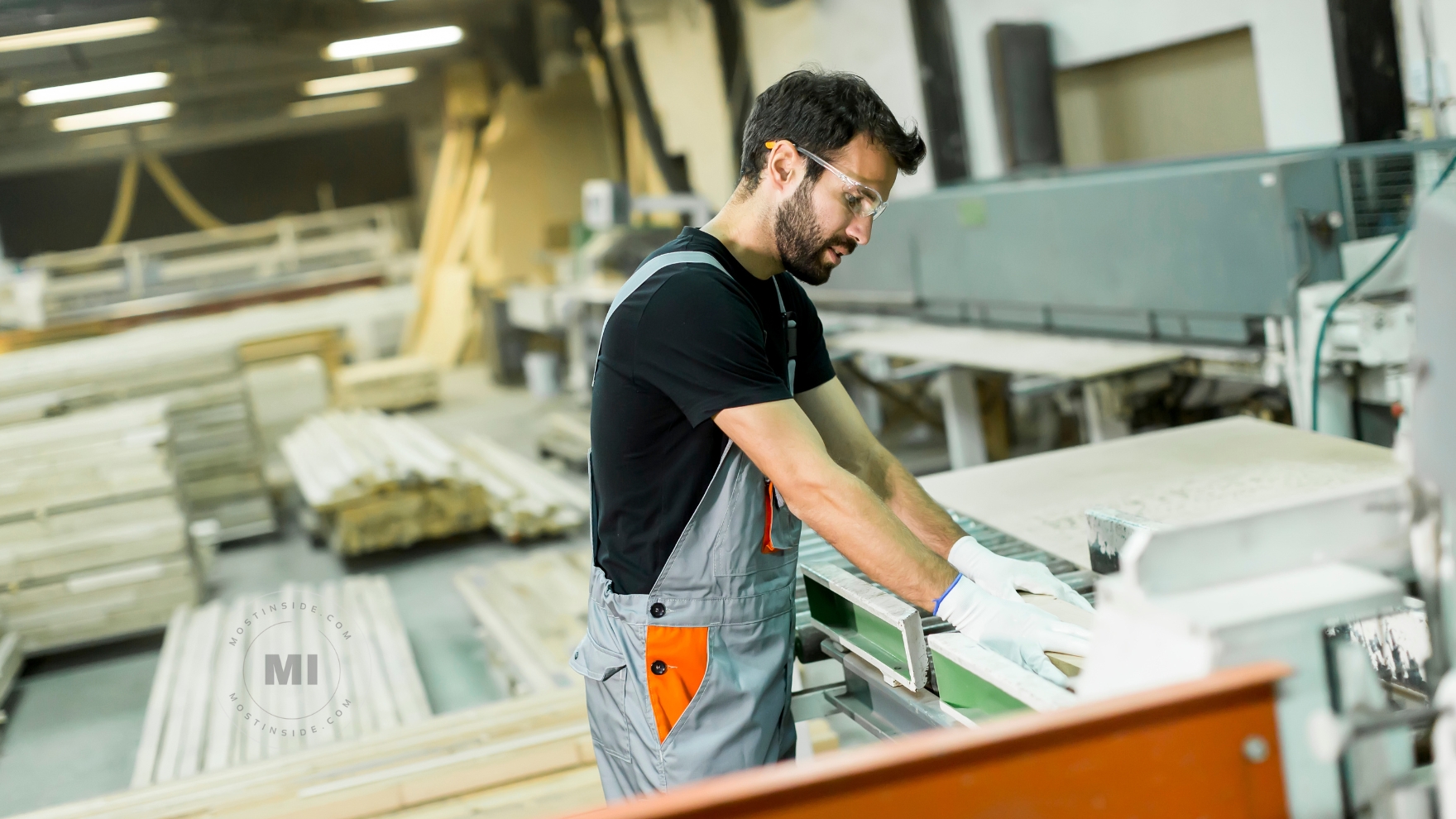4 Tips for Choosing the Right Men’s Work Clothes

Physical work is a highly demanding and exhausting activity. You need complete focus and dedication to the job without any unnecessary impediments. Improper work attire is one of those factors that can stand in your way of doing labor effectively. You need work clothes and shoes that are comfortable to wear and offer reliable protection.
Since there are many elements to consider and options to choose from, we’ve jotted down some tips to help you choose men’s work clothes best suited to your needs.
Let’s dive in!
Contents
Toggle1. Consider the Quality of Materials

Many factors can contribute to the quality of a fabric, and it can vary depending on its specific usage or application. Always check the tags when buying work clothes for men to see if the material suits your needs. These are the materials commonly used for making workwear:
Cotton
Cotton is a popular choice for working apparel because it is a natural, breathable fabric that is comfortable to wear. It’s also solid and durable, making it suitable for various work environments.
Cotton workwear can include shirts, pants, overalls, coveralls, and similar clothing. It is also practical and easy to care for, as cotton can be machine washed and dried. Cotton is also very odor-resistant, so it’s a good choice for clothing that goes directly on your skin. Cotton shirts are excellent for wearing under work jackets or protective clothing.
Cotton Duck
Cotton duck is a particular type of cotton fabric that is heavy and plain-woven. It is durable and resistant to wear and tear, making it a good choice for heavy-duty work clothes. Overalls, coveralls, and other clothing worn in harsh conditions are often made from this material.
Cotton duck is also resistant to water, making it a good choice for workwear exposed to wet or outdoor environments. As with all cotton variations, cotton duck is breathable, comfortable, and an excellent material choice for long-lasting workwear.
Flannel
Flannel is a soft, woven, and warm fabric made from wool, cotton, or a blend of both fibers. It is often used to make shirts, pants, and other clothing suited to colder weather.
Flannel is also a good choice for those who want a comfortable, casual look for their workwear. Flannel shirts are a popular everyday clothing choice. Practical and comfortable, they are widely known as a classic option for working men.
Leather
Leather is highly durable and can survive scratches, tears, and punctures that other fabrics wouldn’t. Some examples of leather workwear include protective clothing (e.g., aprons, gloves, sleeves), footwear (work boots), belts, and similar.
Synthetic
Synthetic materials sometimes get a bad rep, but they can be high quality, depending on the manufacturer and production process. Synthetic fabrics are made from artificial materials, as opposed to natural fibers like cotton or wool. Some examples of synthetics include polyester, nylon, and spandex.
One advantage of synthetic fabrics is that they are often more durable and easier to care for than natural fibers. They can also have specific properties, such as moisture-wicking or wrinkle-resistance. These materials are often used for jacket lining, as they provide good insulation.
Some synthetic fabrics, like polyester and nylon, are solid and are often used in attire that needs to be durable, such as coveralls. Other synthetic materials, like spandex, are stretchy and often used in clothing that requires a lot of flexibility.
2. Acquire Safety Clothing

Manual labor can often be dangerous and lead to injuries if you’re not careful. Luckily, many safety clothing items are available to protect you from various hazards on the job. To ensure maximum safety while you work, consider equipping yourself with the following types of safety apparel:
High-visibility Clothing
High visibility clothing, also known as hi-vis or reflective clothing, makes you more visible in low-light or high-traffic environments and can protect you from being hit by moving vehicles or equipment. Hi-vis clothing design typically consists of bright, neon colors such as yellow, orange, or lime green.
It may also have reflective stripes or other reflective elements to make the wearer more visible in low-light conditions. Hi-vis clothing is commonly worn by construction workers, police officers, firefighters, and other professionals who work in dangerous environments and must be easily visible to others.
Protective Suits
Protective work suits are worn over regular clothing to protect against heat, chemicals, electrical arcs, or radiation hazards. They are often made from flame-resistant or chemical-resistant materials.
Protective work suits can vary in style and design, ranging from full-body suits that cover the entire body to aprons or vests that provide protection only to certain areas of the body. Workers in construction, manufacturing, and healthcare industries commonly wear protective suits.
Fire Resistant Clothes
Fire-proof work jackets are an essential piece of personal protective equipment (PPE) for workers in hazardous environments, as they can help to prevent burns and other injuries in the event of a fire or other heat-related accident.
They are typically made from flame-resistant materials such as Nomex, Kevlar, or other synthetic fibers resistant to ignition. Workers wear fire-proof work jackets in industries with a risk of heat exposure or fire, such as welding, manufacturing, or construction. Firefighters and other emergency response personnel also wear them.
Water Resistant Clothes
Water-resistant work clothes are often made from polyester, nylon, or other synthetic fibers that are treated with a water-resistant coating or finish. They may also have features such as sealed seams or waterproof zippers to help keep water out. Construction, agriculture, and fishing industry employees wear water-resistant clothing, as they often work in rainy and other wet conditions.
Insulated Clothes
Insulated clothes are a must-have in cold weather, as they keep the body warm and prevent hypothermia. They are made from materials that can trap air, which helps to insulate the body and retain heat. Insulated clothes consist of natural materials such as down or wool, or synthetic materials such as polyester or nylon.
3. Choose The Right Size

Finding the right size of clothes can be tricky since different brands often size clothing differently. If you’re buying online, the best practice is to measure yourself, then compare that to the size charts of the particular online store. Usually, you’ll need measurements for these body parts:
- Sleeves: Place the tape on the middle of your back just beneath your neck, and extend the tape to your shoulder. Then continue down to the elbow and further down, just a bit past your wrist bone. Always slightly bend the elbow when measuring, so your sleeves won’t end up being too short.
- Bust: Wrap the tape measure around the fullest part of your bust.
- Waist: Measure where your waist is narrowest, just above your belly button.
- Hips: Measure around the area of your hips that is the widest, which is approximately 8 inches below your waist.
- Inseam: To measure your inseam, you will need a pair of pants that fit you well. Lay the pants flat and measure from the crotch seam to the bottom of the leg.
If you are between sizes, it’s usually better to size up rather than down. Clothes that are too small can be uncomfortable and constricting, while clothes that are a little bit bigger can be adjusted with a belt or taken in by a tailor.
Remember to hold the tape measure level and not too tight when taking your measurements. Having someone else help you with this task can be helpful and provide you with more accurate results.
4. Pay Attention to Pockets

If you carry a lot of stuff when you work, look for apparel rich with pockets. Clothing with holster pockets is an excellent choice if you need to store tools and keep them close to you. For even more convenience, you can opt for clothes with detachable holster pockets. This way, you can take them off when you need more flexibility and space.
Consider Your Working Conditions to Pick the Best Men’s Workwear
Don’t forget to account for your specific working conditions when shopping for work clothes. Every line of work is different and requires different clothing options. Take some time and make sure you choose workwear suitable for your area’s weather and terrain conditions.
Overall, prioritize comfort, safety, and quality when choosing work clothes. Good luck!
Recommended For You
Why Sustainability Matters In The Fashion Industry
Most Inside
Most Inside offers high-quality recommendations and valuable updates to enhance all aspects of your life, providing premium guidance and enriching experiences.




